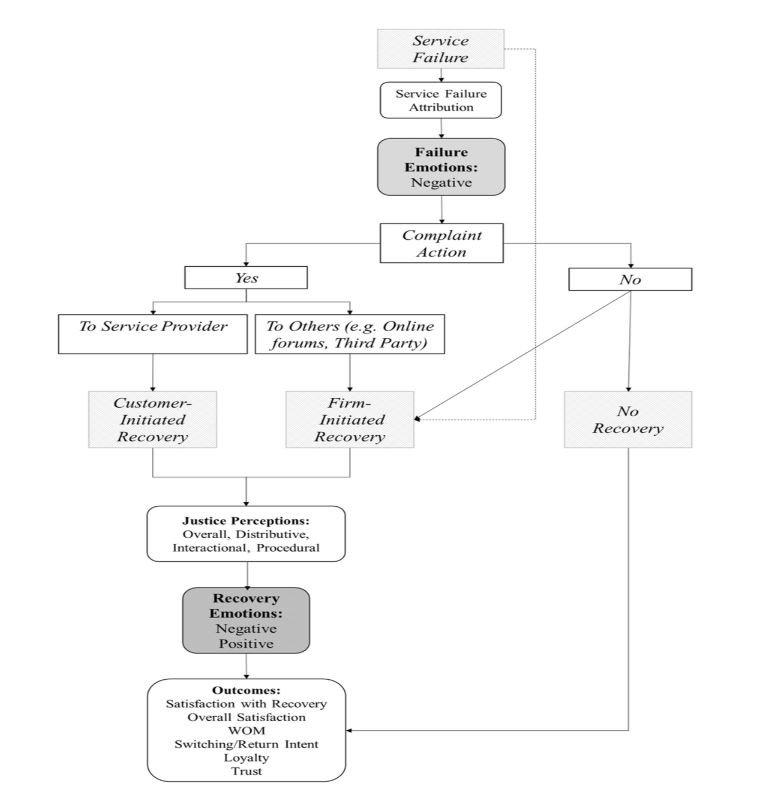



With most consumers checking out online reviews these days, it may feel like your agency’s brand personality is on trial as you respond to each negative review. The negative feedback isn’t in itself a death alarm for your insurance agency. Instead, there’s immense public relations value in the humility you showcase by professionally handling negative customer engagements and turning those into positive experiences as everybody else is watching.
No matter the reason for client dissatisfaction, it’s a lot easier to resolve it when you properly understand the emotions that the customer experiences during service failure and the recovery process. As a responsible brand owner, you will need to pay special attention to the sentiments that your recovery efforts may trigger as those will impact the client’s satisfaction and loyalty.
Service failure generally invokes negative customer emotions, such as anger. Conversely, your recovery actions can trigger negative or positive sentiments, which is why it’s important to be proactive in handling the situation once you spot a negative review online for your agency.
The ideal first step to foster positive recovery emotions is to initiate contact with the client and inform them of what you’re doing to remedy the situation and the expected wait time. Whether you offer a refund or discount, remember that monetary compensation is key to pleasing and calming the client down.
Below is a conceptual framework by Sara Valentini, a marketing research specialist at the University of Bologna. In the framework, she highlights the entire cycle of a service failure and the recovery strategies by a firm leading to the expression of different forms of emotions by customers and the outputs you can expect from your service recovery process:

Source: Customer’s emotions in service failure and recovery: a meta-analysis at Research Gate
According to this model, a dissatisfied policyholder is likely to experience negative emotions such as anger or frustration. Led by their emotions, they may either complain to your agency about it or express their dissatisfaction to others, such as on a consumer/product review website. In the negative review case, you will get the customer complaint on the review sites.
As per the model, if you act by initiating the recovery process from your end (check the “Firm-Initiated Recovery” graph), by the time the review is posted--or more proactively--even before it, you have a fair chance of winning back your unhappy customer. Your effort to reach out to the client and address their concern will elicit a second wave of client emotions, which can either be positive or negative. If the client is satisfied, they may experience happiness, calm, or gratitude. They’re more likely to return to or remain with your agency and spread word of mouth about it to others online.
On the other hand, if you don’t properly manage the recovery process, the unhappy client may experience more sadness, rage, or frustration. As a result, they might leave your insurance agency or file a formal complaint.
Do you sometimes wonder why the folks at Disney have held the distinguished position of customer service king for decades? Well, part of it is because they cracked the secret to successfully dealing with unhappy customers—the L.A.S.T model! The acronym for this time-tested service recovery approach stands for:
If you look at the L.A.S.T. model closely, you will find that it so finely exhibits the essentials of Sara Valentin’s “customers’ emotions in service failure and recovery” framework.
We have provided below an implementable guide that elaborates on the essence of Disney’s L.A.S.T. and Sara Valentini’s models that will help you handle the negative reviews of your insurance customer and turn them into your loyal clients.
It’s important that you properly handle genuine negative reviews to restate or restore trust in your insurance agency brand. However, business listing platforms like Google recognize your right to fair consumer reviews as it impacts how prospective clients perceive your brand. To protect your agency’s image, you can flag offensive or inappropriate feedback based on the Google guidelines.
Similarly, Yelp encourages reporting reviews that don’t accurately reflect the reviewer’s experience with a brand. You should flag such feedback too, including inaccurate, damaging comments based on hearsay or media reports. Do the same for false consumer reviews on Facebook that violate the community’s standards.
The idea of independent agents evolved with the need for an insurer-neutral entity that can listen to consumers to understand their unique needs. Unlike captive agent services, unbiased agents help prospects select the best insurance products that are best suited to their requirements without inclining towards a particular carrier.
However, the pressure to perform and survive in this extremely competitive insurance industry might have led many independent agencies to focus solely on sales and ignore their role of value addition for their clients. It often leads to negative customer experiences as prospects feel that agents are forcefully leading them to purchase a policy without taking the time to listen and understand their unique needs and requirements.
With the increased focus on sales and profits, cases of customer disappointment are on the rise. According to a Bright Local study, up to 40% of consumers consider expressing their dissatisfaction online after a negative service experience.
It is important to understand that policyholders aren’t cash machines. Properly handling their emotions after they’ve left a negative review is vital to keeping them happy and can help return unhappy clients to your insurance agency. You can accomplish this by tactfully handling negative reviews, which entails turning undesirable situations into opportunities to portray your reputation in a positive light.
Instead of jeopardizing your business image, leverage the Stratosphere Online Reputation Management tool. Our insurance reputation management solution will track and notify you of unfavorable online reviews so you can promptly reach out to the client before they’ve inflicted serious damage on your reputation. Do you wish to streamline the customer service recovery process with our ORM solution? If so, contact us today for inquiries!
Related post: How Agents Can Leverage Online Reviews to Generate More Leads